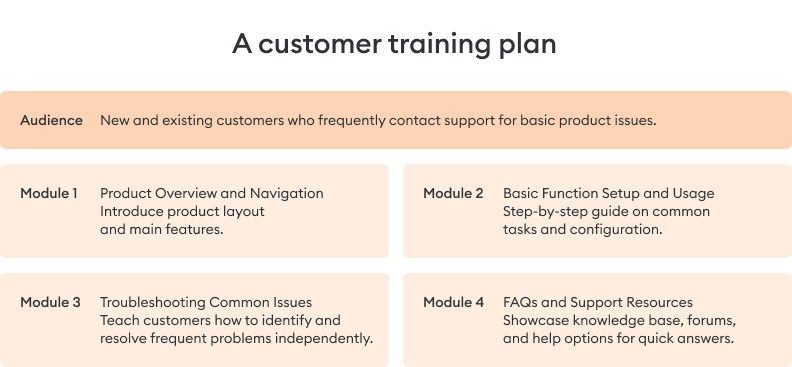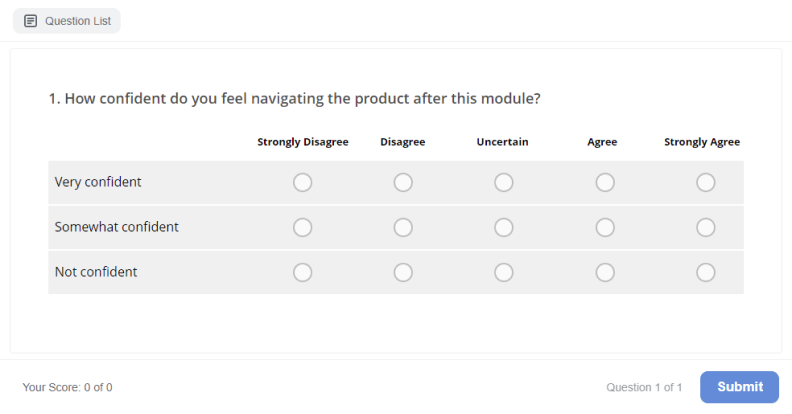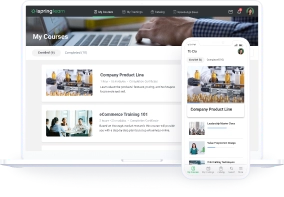Customer Training: Definition, Benefits, and Best Practices

Customer training is all about helping customers get maximum value from your product or service as quickly as possible. When you deliver quality training sessions or courses, you don’t just teach users where to click; you make their lives easier and thus improve customer satisfaction and strengthen long-term relationships with loyal customers that benefit your business.
But what’s the best way to launch your customer training strategy? And how can you align them with your business objectives and organize your initiatives for maximum benefit? We cover this and much more in our comprehensive guide.
What Is Customer Training?
Customer training is the process of educating and empowering customers to use your product effectively, whether that’s through onboarding tutorials, webinars, interactive eLearning modules, or hands-on simulations.
The primary goal is to help users build confidence, master features, and solve real-world challenges without getting stuck or overwhelmed. This isn’t just about technical instructions — done well, customer training turns new users into product advocates who see your brand as a critical solution, not just another tool, while supporting a smooth customer onboarding process.
Key Benefits of Customer Training
Customer training delivers impact at every phase of the customer lifecycle and helps meet customers’ needs:
| Benefit of customer training | Impact |
|---|---|
| Speeds up adoption and reduces “time to value” | Customers start seeing results faster, which also helps increase customer engagement |
| Prevents early customer churn | Helping users perceive the product’s value quickly reduces the number of unhappy customers |
| Lowers the number of support tickets | The support team isn’t occupied answering the same questions repeatedly, thus lowering support costs |
| Boosts customer retention, lifetime value, and ongoing revenue | Satisfied customers are more likely to return and become brand advocates, which helps foster customer loyalty |
| Gives your brand a reputation for helpfulness and expertise | Customers are more likely to share positive word-of-mouth when they feel truly supported |
| Supports scalable growth | Makes onboarding and ongoing education available to more users through customer learning programs — often without a need for direct intervention |
How to Create a Customer Training Program
Gallup’s research makes a strong case: when you boost customer engagement, your business can achieve up to a 66% increase in sales growth and see brand loyalty jump by 25%. Many organizations still find it difficult to truly connect with customers and keep them actively engaged. This is a common challenge even for experienced teams.
If you want to build lasting customer relationships, customer training programs offer one of the best tools available, forming a key part of effective customer retention strategies. Get this free step-by-step checklist to guide you through defining your strategy, creating content, promoting your program, and measuring results for maximum training impact.
What should a customer training program include?
Top companies understand that putting customers first is the secret to success, and that applies to training as well. That means tailoring your customer learning programs to fit your audience’s unique needs, preferences, and the ways they use your product.
While customizing your program is crucial, here are the fundamental components every organization should include in its customer training program.
- Clearly defined learning goals and outcomes. For example, customers will reduce support requests related to basic functions by 40% after training.
- A structured training plan that takes customers through the training in a logical manner, breaking down complex topics and integrating regular reviews.
- Engaging content that covers essential product knowledge and best practices: video tutorials, online training courses, quizzes, virtual workshops, etc.
- Assessments to test learners’ knowledge and boost retention.
- Certifications to recognize learners’ achievements and reward them for completing the program.
- Ongoing support channels, such as customer knowledge bases, customer service teams, and discussion forums (these should be updated regularly to reflect new product updates).
- Feedback surveys that allow customers to share valuable insights into the impact of the training and their overall experience.
- Additional training resources, such as refresher courses or advanced webinars, to promote continuous learning and support customers in further their expertise.
Also read: How to Develop a Successful Employee Training Program
How to Create Learning Content for Customer Training
Before you launch your customer education program, you’ll need to create customer training materials. To do this, you’ll need an authoring tool like iSpring Suite.
It’s PowerPoint-based software designed to produce engaging online courses, quizzes, interactions, role-play simulations, and video tutorials within minutes. This all-in-one solution is ideal not only for customer training but also for a variety of scenarios, such as onboarding, product knowledge, sales, and customer service training.
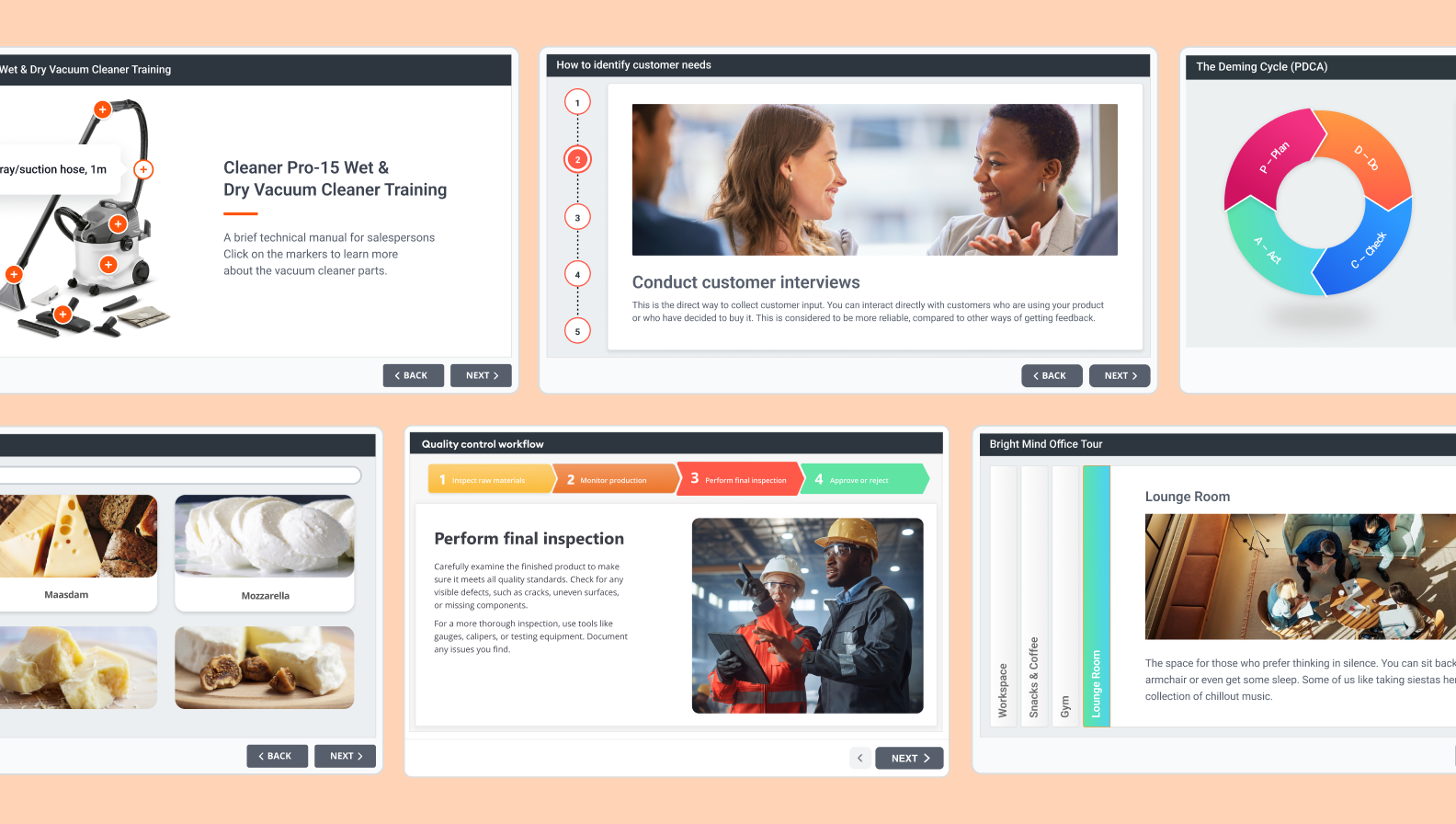
iSpring Suite
Create media-rich SCORM courses with one complete authoring tool – from quizzes, interactions, and videos to role-plays.
No training needed to start!
Customer Training Programs in Action: From Strategy to Success
A great customer training program is much more than a collection of videos or courses. It’s about crafting an engaging journey that transforms unsure beginners into confident, skilled users.
The best programs are thoughtfully designed pathways that lead customers from initial onboarding all the way to advanced expertise, directly supporting your key business goals and reinforcing the customer success lifecycle.
Here’s a proven framework based on what successful companies do.
Step 1. Define your objectives and metrics for success
Before creating any content, answer a strategic question: What does success look like? Your program’s goals should align directly with business outcomes. Are you endeavoring to:
- Stop customers from leaving after the first month?
- Get people to use that amazing feature you just launched?
- Give your support team a break from answering the same “how-to” questions 100 times a day?
Your entire program will be built to achieve these targets.
Step 2. Map the customer journey and identify knowledge gaps
Think about the different stages your customers go through. What do they need to know right after they sign up? What about when they’re ready to level up? Your training should support them at each step:
- Onboarding: “How do I get started?” (quick-start guides, setup wizards).
- Adoption: “How do I use key features to solve my problem?” (in-depth courses, best practice webinars).
- Advocacy: “How can I become an expert?” (Advanced certifications, community forums).
Not all customers are equal. Segment your audience by role, use case, or product tier, for example, and create personalized learning paths. A marketing manager using your software will need different training than an IT administrator. Structured paths prevent overwhelm and ensure that users get the most relevant information efficiently.
Step 3. Create engaging, multi-format content
Cater to different learning styles with a variety of content formats. Move beyond static PDFs to create a dynamic learning experience:
- Interactive tutorials and simulations. Allow users to learn by practicing in a risk-free environment.
- Video workshops and webinars. Ideal for demonstrating complex workflows and hosting live Q&As.
- Microlearning modules. Bite-sized lessons (under 5 minutes) are perfect for quick, just-in-time learning.
- Certifications and assessments. Check knowledge, boost credibility, and give users a sense of accomplishment.
Step 4. Get a home for your training – this is where an LMS comes in
You can’t just email your training content and call it a program. You need a central, easy-to-use place to house all these materials — a learning management system (LMS) that will let you deliver customer training online.
An LMS acts as the operational engine of your entire customer training program. It provides a single point of access for all training materials, ensuring they are available to customers anytime, anywhere, and on any device.
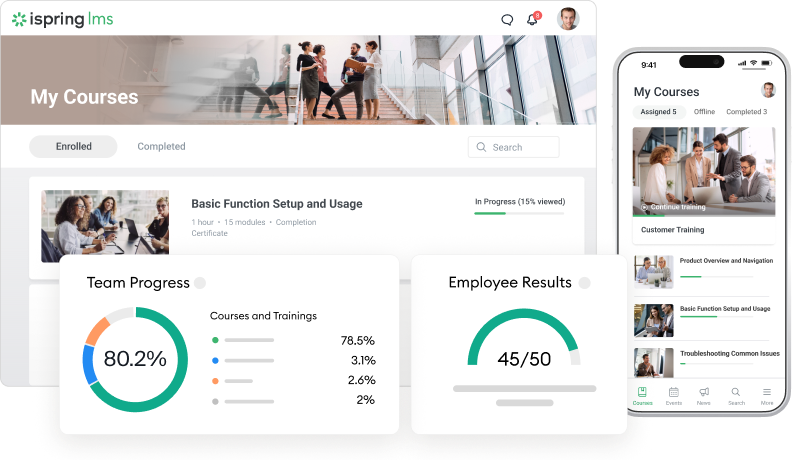
Beyond centralization, the system automates key processes, from enrolling new users to sending course reminders and issuing certificates, freeing up valuable administrative resources.
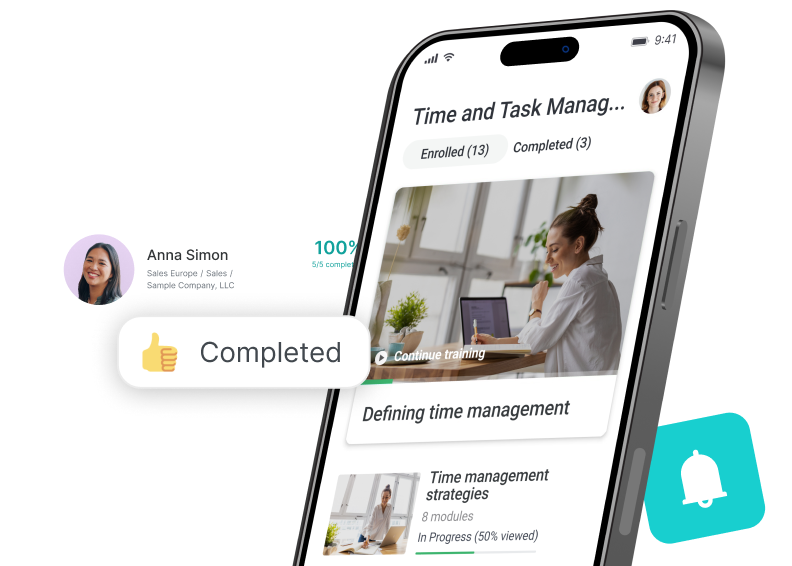
Moreover, an LMS enables personalization, allowing you to segment your audience and assign tailored learning paths with ease. Most importantly, it provides crucial data on learner progress, engagement, and performance.
To help you select a solid training platform, we’ve put together a list of the fundamental features that any LMS for customer training should have.
- A user-friendly interface that’s easy for customers, trainers, and admins to navigate
- Robust content management features to help you organize training materials and import existing content
- Multi-format content support so you can incorporate videos, quizzes, interactions, and documents into your training programs
- Advanced user management tools that allow you to segment and manage customers on the platform with ease
- Powerful tracking and reporting capabilities so you can pull detailed insights into customer progress
- Customization tools that let you tailor the platform to align with your brand identity for a cohesive customer experience
- Mobile support, so customers can access training on the go
- A high level of support and training from the LMS vendor to help you create a positive experience for your customers
iSpring LMS
Drive business growth with smarter customer training
Your all-in-one platform for launching customer training that drives customer loyalty from day one.
Step 5. Launch, promote, and integrate
A great customer training program is useless if no one knows about it. Integrate training into the natural touchpoints of the customer journey. Embed links to relevant modules in your product, announce new courses through your email newsletters, and have your Customer Success Team (CST) recommend training paths during their calls.
Step 6. Measure, iterate, and scale
Your first version won’t be perfect, and that’s okay! The key is to treat your training program as a product itself.
- Check the data with LMS reports. Are customers actually finishing your courses? Where do they drop off?
- Ask for feedback. A simple “Was this helpful?” survey can give you golden insights.
- Iterate. Use what you learn to update old content, fill gaps, and improve the experience.
The goal is to design a successful customer training program that engages users and drives measurable results.
FAQ on Customer Training
This section covers the most commonly asked questions about training your customers.
1. What is the purpose of customer training?
Customer education is aimed at equipping your clients with the knowledge and skills they need to use your product effectively and get maximum value from it.
2. Why is customer training important?
Customer training accelerates the learning curve, helping users transition from novice to expert as quickly as possible. This impacts the user experience positively, optimizes the use of your product, reduces your customer support workload, and improves customer retention rates.
3. What are some customer training best practices?
For optimal results, we recommend following these best practices for providing customer training on products.
- Understand your customers’ needs, desired outcomes, and current skill levels by conducting surveys and feedback interviews. Then, use this information to identify knowledge gaps that your training program should fill.
- Define clear learning objectives (3-5 objectives for each training module or lesson) to ensure that your customers have a structured and relevant learning experience.
- Create engaging content. For instance, incorporating simulations, real-world examples, and hands-on, interactive exercises boosts learner engagement. This, in turn, helps customers retain critical knowledge.
- Break complex topics down into bite-sized chunks to make them easier for customers to digest. This is also known as microlearning and is an excellent strategy for avoiding cognitive overload. Plus, it’s much easier to update and reuse microlearning modules.
- Offer just-in-time training that gives customers access to essential training materials at the point of need. A great example is providing step-by-step guides that customers can access quickly from a learning management system (LMS) mobile app.
- Set clear success metrics and use LMS analytics and reporting to track the effectiveness of the training program. Valuable metrics to monitor include completion rates, assessment scores, and time spent on each training module.
- Review the customer education program regularly, updating it to reflect customer feedback, product updates, and new industry trends.
4. How often should customer training programs be updated?
Training programs should be updated whenever new features or product changes are released. Even without major updates, reviewing content at least every 6–12 months ensures relevance. Frequent updates also show customers that the company is actively supporting their success and adapting to their evolving needs.
5. How can I measure the ROI of a customer training program?
ROI can be measured by tracking adoption rates, customer satisfaction scores, reduction in support tickets, retention rates, and engagement with upsell or cross-sell opportunities. Analytics from a learning management system can give insights into course completion, time spent learning, and assessment results, providing a clear picture of program effectiveness.
Next Steps
Customer education plays a crucial role in ensuring the long-term success of your business. It helps build loyal customers, lowers churn rates, and drives revenue growth. However, creating an effective customer training program can be challenging. Using a reliable LMS simplifies the process of organizing and delivering training, freeing up your team to focus more on helping customers succeed. If you want a robust LMS to power your customer training efforts, sign up for a live demo of iSpring LMS today.


